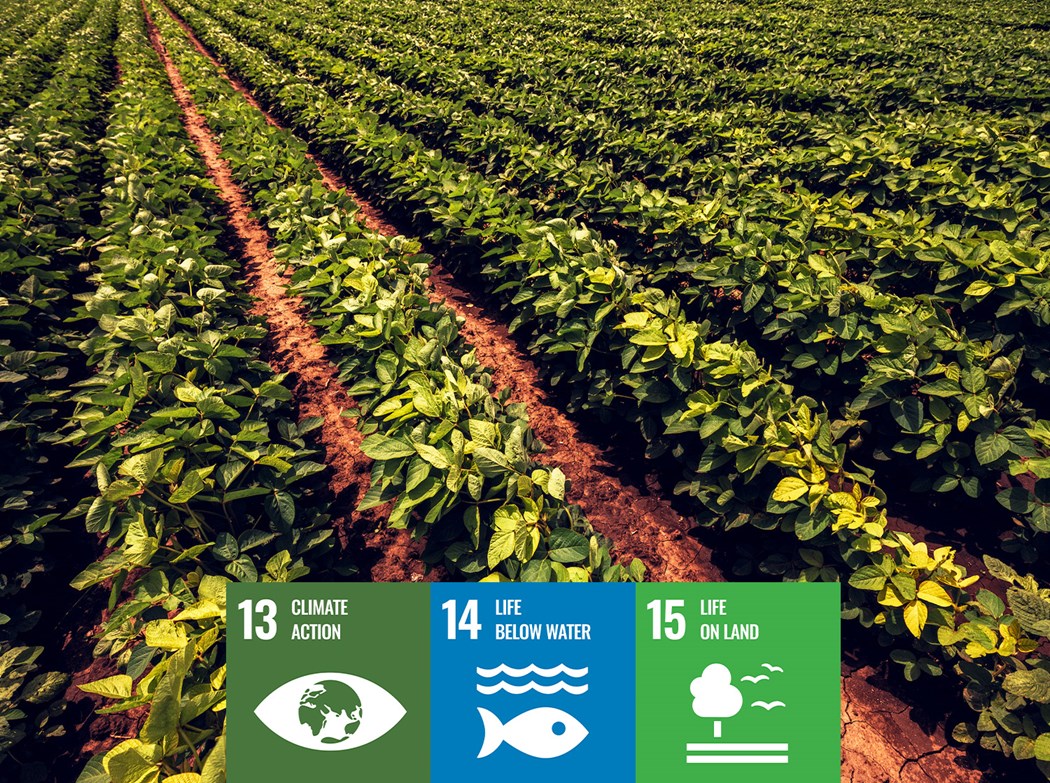
4.2 Natural resources

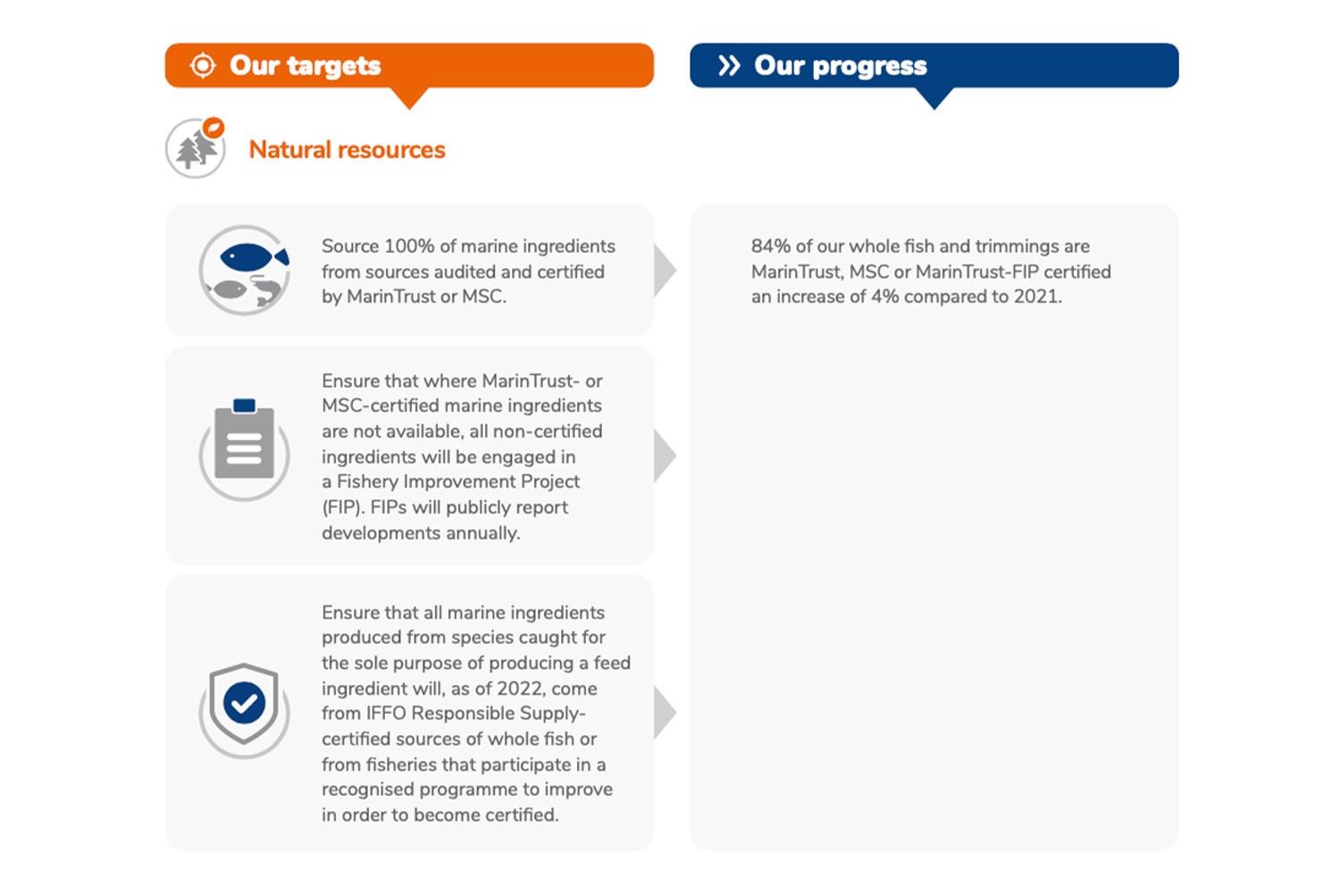
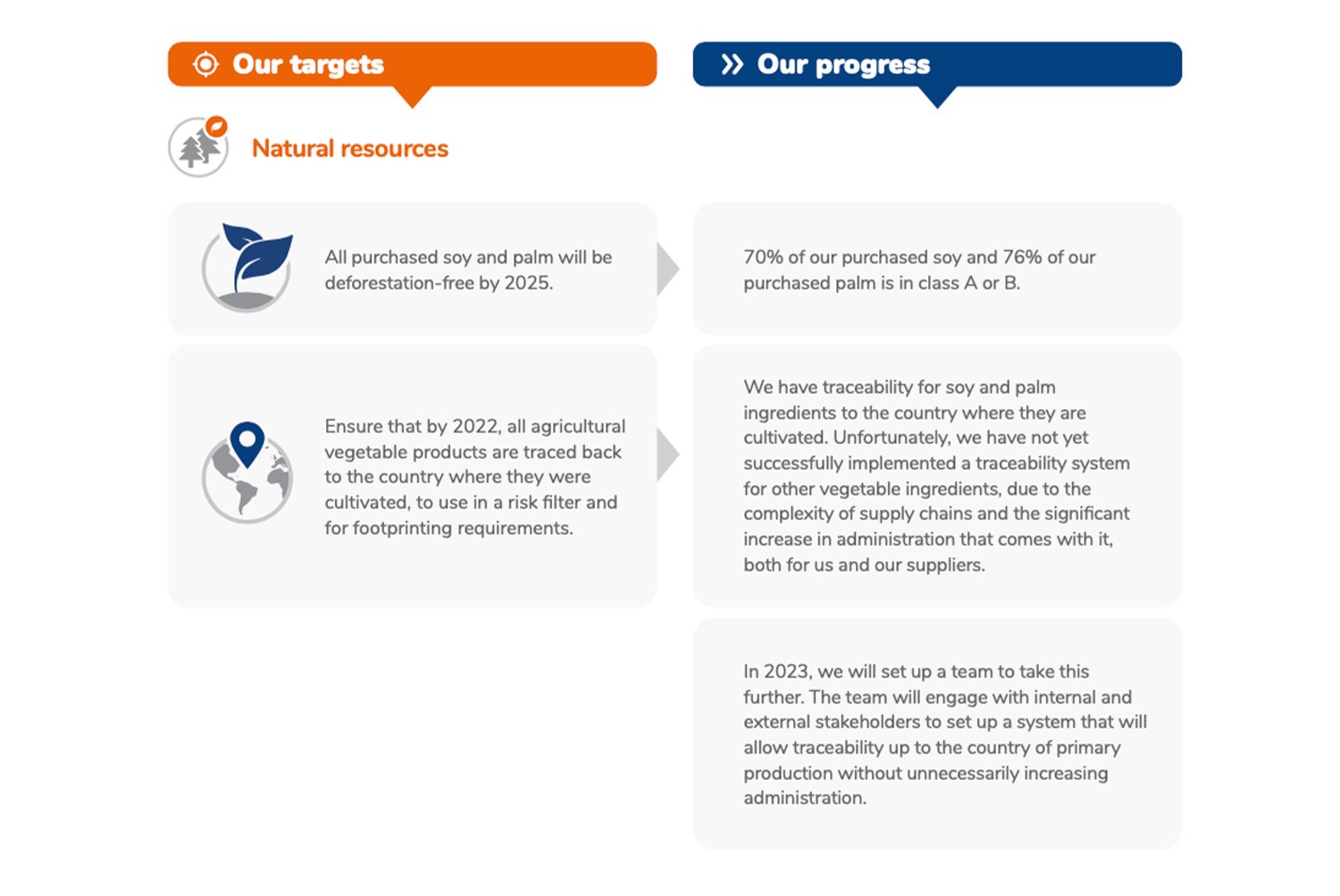
Strategy 1
The first is supplier engagement, in which we actively reach out to select suppliers to engage them on our journey. Because Nutreco sources raw materials from many suppliers all over the world, it is impossible to engage with all of them in an effective way. We use secondary data, such as average LCA data from recognised LCA databases, to identify the ingredients and suppliers that potentially contribute most to our scope 3 emissions. We found that 216 ingredient suppliers account for 80% of our scope 3 emissions. These are the suppliers we will focus on, engaging with them to identify potential opportunities to reduce their GHG emissions. Nutreco is part of a growing group of companies setting ambitious GHG reduction targets for 2030, and we will ask our suppliers to do the same. By increasing the share of suppliers committed to science-based targets, we hope to increase the LCA knowledge within our supply chain and across the whole value chain.
Strategy 2
In these discussions, we will also request suppliers share primary emissions data, for example, LCA data for specific products they deliver. This will help us to better understand emissions across the supply chain and select low-emissions ingredients, the second of our three reduction strategies. When similar ingredients come with different footprints, we give preference to the ingredient with the lowest footprint. This should also be seen as an incentive for suppliers to obtain primary data for their products, as they might give better footprints, compared to secondary data, or at least gain insights into what reduction pathways they could explore to improve their emissions (such as switching to renewable energy).
Strategy 3
Our third reduction strategy is related to the biggest driver of our scope 3 GHG emissions: land use change. Land transformation by human activities is often related to the release, or decreased sequestration, of GHGs. Deforestation, in particular, that frees up space for the cultivation of vegetable ingredients is driving up the land use change part of our emissions significantly. By working together with our suppliers to combat deforestation, we will reduce the land use change associated with our ingredients and, with it, the GHG emissions associated with our feeds.
We recognise that we will have to constantly re-align our approach because of the availability of better data, improved baselines and changing targets and standards. The recent addition of the Forest, Land and Agriculture (FLAG) guidance by the Science Based Targets initiative is an example of a significant change in standards that requires a re-alignment of our approach. The new FLAG guidance will trigger a new baseline, new targets and more detailed administration of GHG figures, which we will be working on in 2023. These changing figures not only bring challenges for precise reduction planning but also for communication to internal and external stakeholders. To address this topic, we are planning to add a data-quality KPI (see Transparency in the footprint of our products) into our systems and transparently report if improvements are based on improved data or actual reductions. In addition, our internal engagement program will aim to empower everyone within Nutreco to contribute to our ambitious scope 3 reduction program.
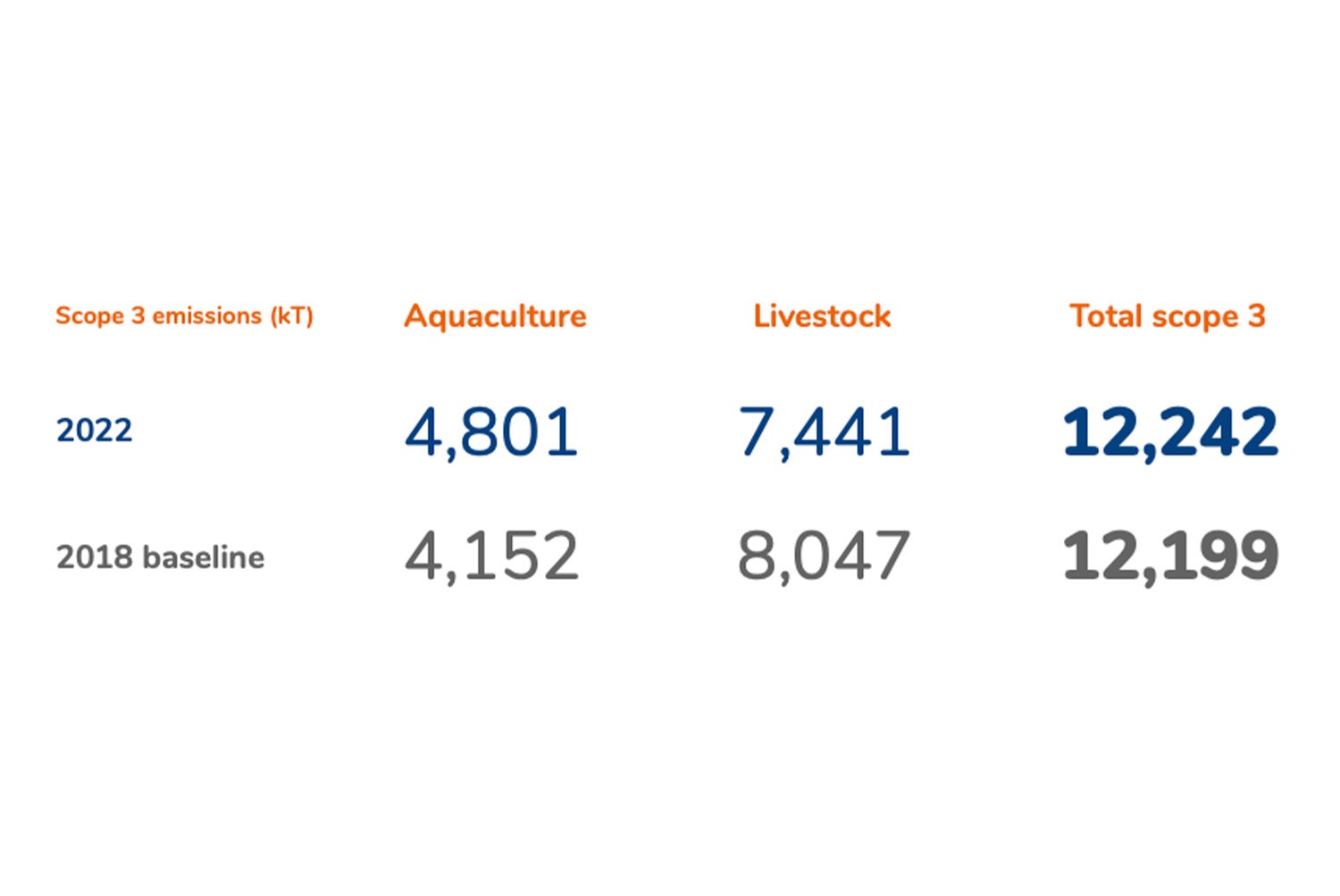
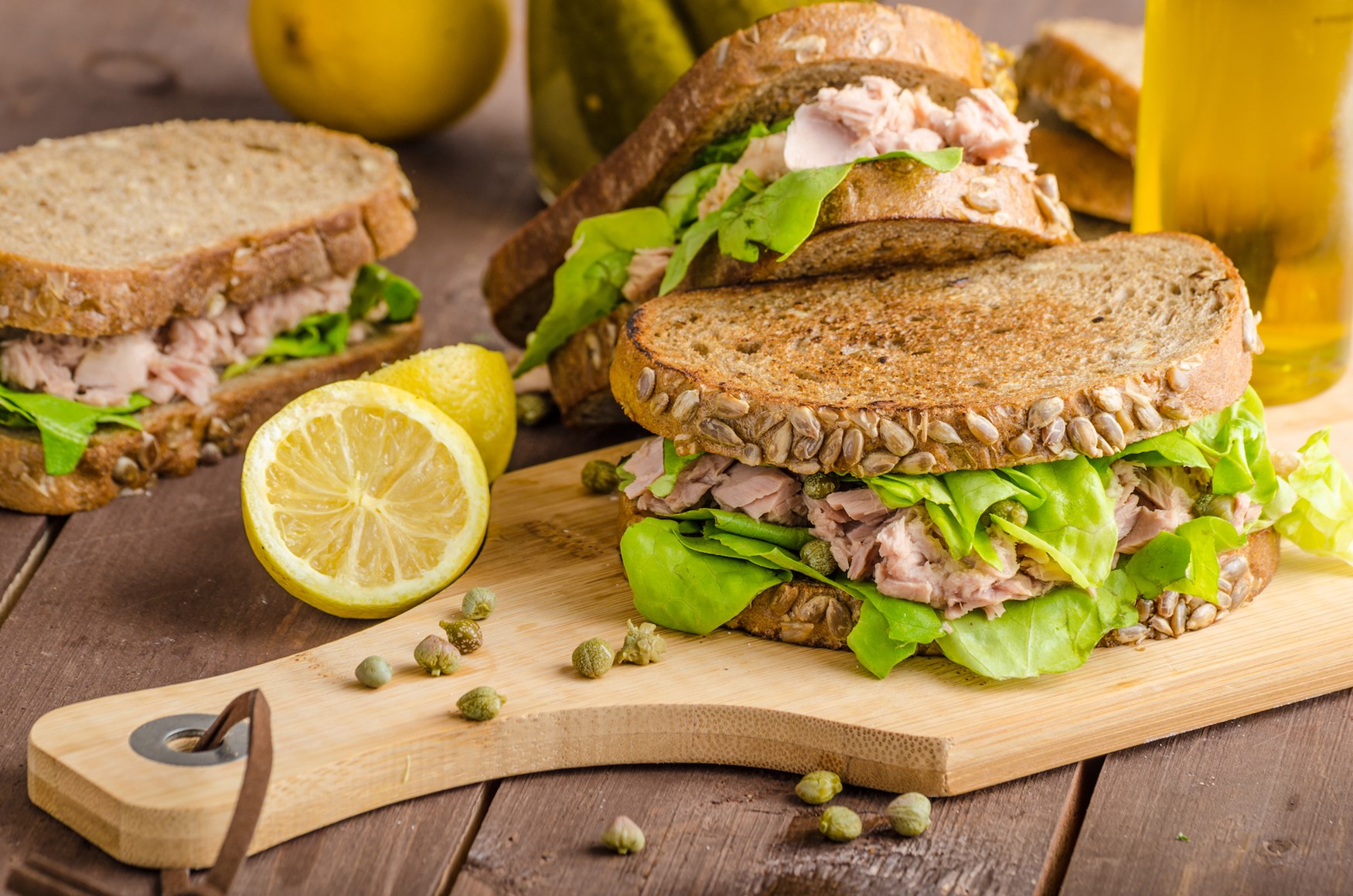
Our progress
In 2022, we created a specialist team to strengthen our LCA platform and tackle the scope 3 science- based targets we have set. We launched a new marine sourcing policy, describing in an open and transparent way, as we did for soy and oil palm, our expectations around sourcing marine products and providing a step plan for our purchasing team.
We expect to see a lot of activity around scope 3 emissions reduction across Nutreco in 2023. Our plans include starting our supplier engagement program to encourage more suppliers to commit to SBT, solidifying our internal LCA model and ensuring internal engagement of all businesses and functions within Nutreco by distributing targets to all parts of the organisation.
As discussed above under Reducing emissions in our own operations, the increase in our scope 3 emissions was mainly due to the growth of our aquaculture line. In 2023, we will also adjust the baseline for disinvestments and acquisitions.

Ecosystems and biodiversity
Healthy ecosystems and rich biodiversity are vital to sustain life and enable society to function properly. Despite its significant economic, social and cultural value, biodiversity worldwide is being lost – in some areas, at an accelerating rate. At Nutreco, we are committed to making a difference in this area. We use independent certification as one tool to ensure the responsible use of natural resources.
An important focus area for us is deforestation and conversion. We are working to understand the associated risks, develop an action plan to address them, source from land-conversion-free sources and partner with stakeholders to help our industry reduce deforestation in livestock production.
Deforestation free
Our soy and oil palm ingredients sourcing policy, published in 2020, outlines the steps we will take towards a deforestation-free supply of soy and oil palm ingredients by the end of 2025. This sourcing policy helps us understand the deforestation risk associated with our purchased soy and oil palmingredients and navigate the available certification schemes that may help mitigate it.
We are working together with suppliers to get a better overview of the origins of our soy and oil palm ingredients. This information is not only used to verify our progress on the soy and oil palm sourcing policy, but also to calculate more accurate GHG emissions. Deforestation is a large contributor to our scope 3 emissions. Eliminating it within our supply chain, and getting suppliers and customers on board for these new solutions, will help us reduce these emissions.
Our progress
In 2022, we further decreased the amount of uncertified, high deforestation risk soy and palm ingredients in our products. We sourced a larger proportion of soy ingredients from low-risk countries, increasing the proportion of Class A soy from 52% in 2021 to 56% in 2022. In addition, 2022 was the first year our Skretting business put an intermediate goal in place, requiring it to source at least Class C ingredients for its products. In practice, this means that a large part of Nutreco’s uncertified, high-deforestation risk soy and palm ingredients are now covered by RTRS and RSPO credits, which moves these volumes from Class D to Class B. Within our Trouw Nutrition business, 98.7% of Class D soy and palm is sourced in the European Union. The European Union's upcoming deforestation-free policy is expected to phase out soy and palm linked to deforestation by the end of 2024, moving a large part of our soy and palm volumes from Class D to Class A.
Nutreco welcomes the 2022 EU ruling addressing proper due diligence of a select list of imported commodities to ensure their deforestation-free origins.
While we understand the complexity and technological challenges of immediate compliance with certain criteria in the legislation, the end result will level the commercial playing field for the EU market. It will be very important for European retail, and ultimately the European consumer, to digest the additional cost of this more sustainable raw material in order to make the solution possible. We look forward to working collaboratively with suppliers to further leverage this EU legislation in support of our efforts to reduce scope 3 emissionsin our supply chain. We urge all players in this field to use their influence to enable deforestation-free soy and oil palm supply chains.

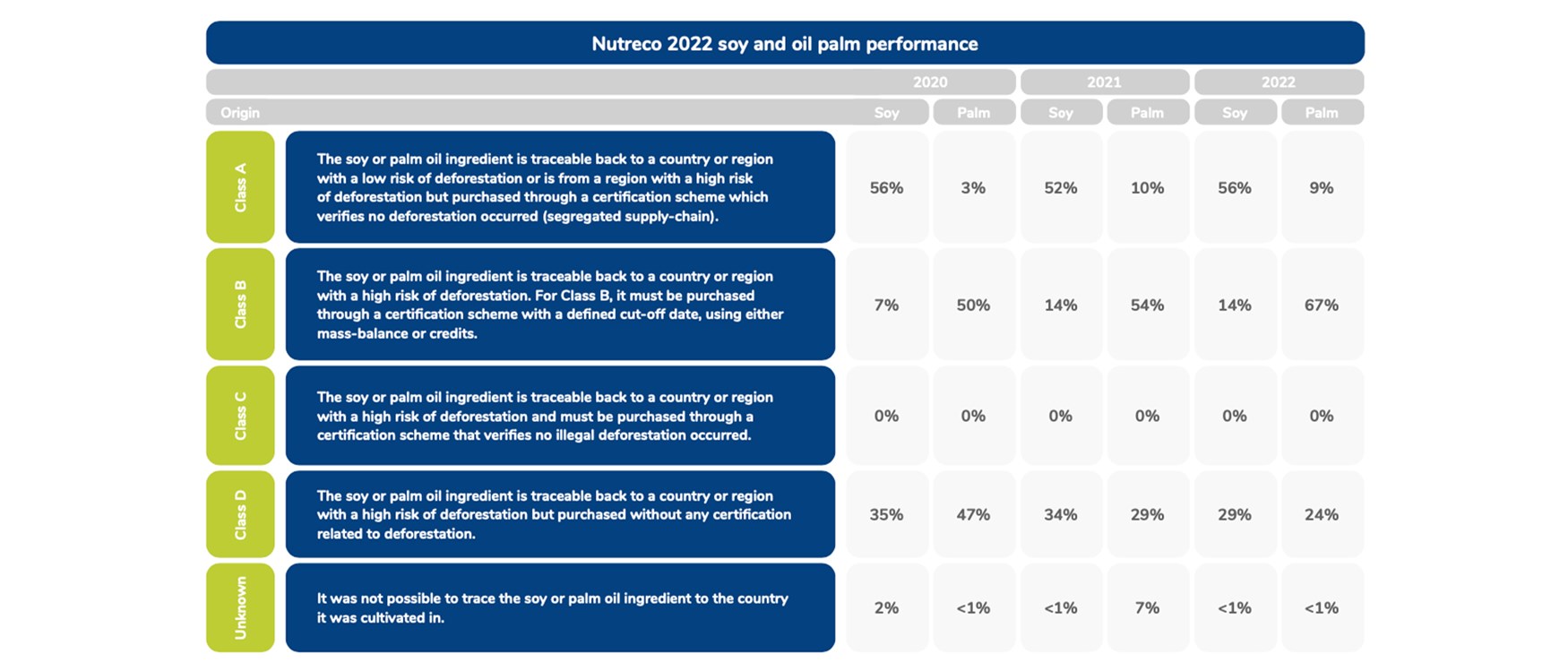
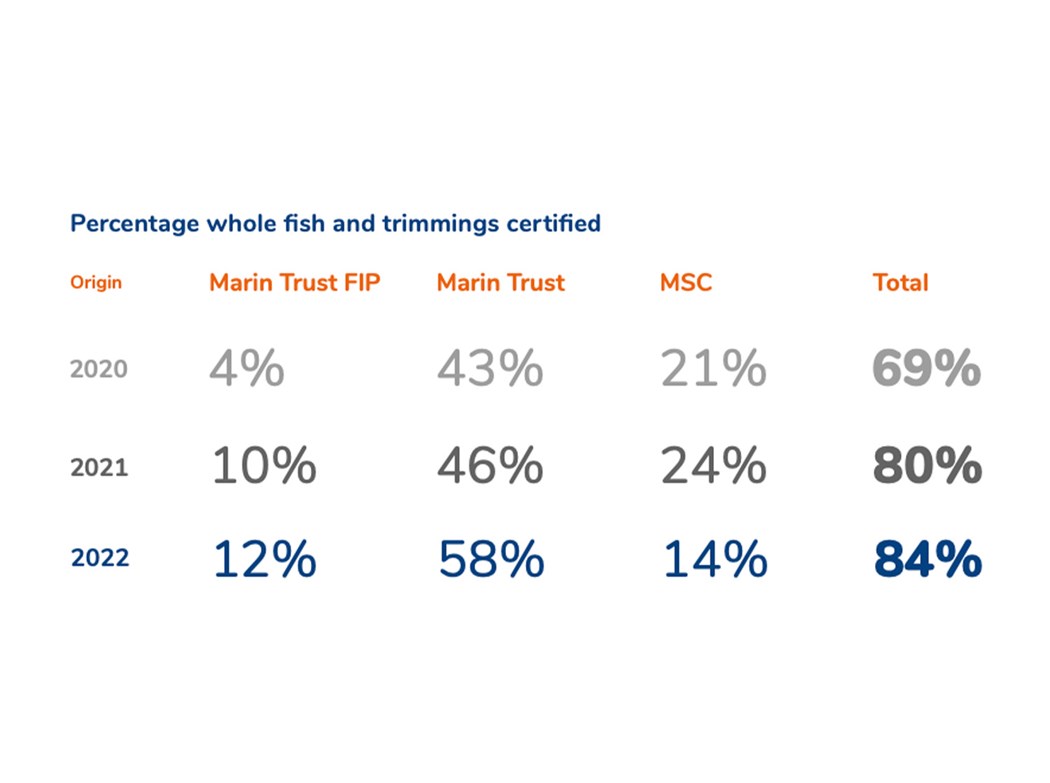
Marine ingredients
Our RoadMap 2025 gives clear targets for sourcing marine ingredients from certified sources or from fisheries that are part of FIPs. The clear increase in the share of fisheries meeting the RoadMap’s goals, together with the launch of the Marine Ingredients Responsible Sourcing Policy, show that Nutreco is moving in the right direction towards fulfilling our ambitions.